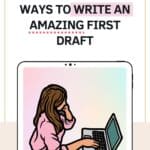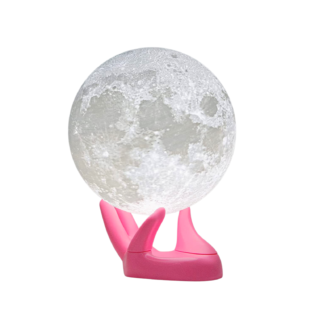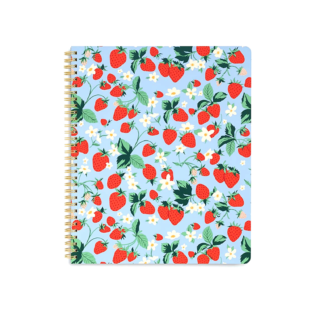

When I first started writing, I could never finish a draft. It felt like every time I came up with an idea, I could only make it to chapter fifteen before I’d abandon it. And then when I finally got good at completing first drafts, I ended up having to do full rewrites despite following conventional wisdom to have an outline.
Today, I’ll be sharing 6 unconventional tips to help you write an amazing first draft.
Find the Story Before You Plot
Save the Cat is great to know because it helps you understand pacing, tension, and overall, where your story needs to go. Outlines are great because it allows you to sanity check if the plot is working. And although both of these have their places, I am going to tell you to set all of that aside—for now.
Yes, this tip goes against 95% of advice you’ll find, but let me explain.
What I’ve found (in my case and many others), that when you’re a new author, you just don’t have the skillset or experience to understand what a good plot looks like. In other people’s books? Yes. In your own? No.
This may sound harsh, but think about it. Experienced authors breeze through the drafting process because they’ve done it so many times. They’re able to figure out the story quickly, and have a firm understanding of plot, which is why it makes sense that they can write an effective outline.
The key word here is effective.
When you don’t know how to write an effective outline, you’ll spend months creating one, you’ll write your book, then you’ll realize once you’re done, that although you’ve plotted everything out, the book still doesn’t work. Even though theoretically the book should work, the story is boring, it feels too formatted / boilerplate, or the character motivations don’t make sense.
And for some, they never make it to the first draft because they can’t get past the crappy outline.
So then the question becomes: how do you write an effective outline when you’re a newbie author?
Well, not by writing more outlines. Not by doing more character sheets or figuring out your MC’s favorite color. You get there by feeling around the story. Letting your characters take the lead. Discovery. When you’re a newbie author, you discover the plot by writing the book. And through rewriting and rewriting (and LOTS of feedback), you build the skillset and develop the eye for what good plots and outlines look like.
I recommend instead, knowing how your book starts, a few hypothesis for what the turning points could be, and how the story ends. Then, go write the book.
You write the book, and once you have a completed first draft…
- You read through it.
- You take note of the parts that feel magical, and the parts that aren’t any good. At the end of this, you’ll have the heart of the story.
- From there, you pull out Save the Cat, you open up your doc, and you put together an outline based on the discoveries you made from draft one. You take that story and you shape it into plot and you mold it into a draft #2. And by draft #4, you’ll finally have something solid (that you actually feel proud of).
Prioritize Story Over Plot
When we try to force a story to work through plot and beat sheets, we are using plot to force our characters to take actions that don’t make sense for them. When I used to do this, I kept ending up with a stories that felt fragmented.
It was a whole bunch of parts, that from a distance and through an outline, it looked good—but when I read the manuscript, it was missing soul. I also noticed that there were major events happening that should’ve devastated my characters, but they weren’t even reacting to them, because I’d enslaved them to the plot. And my book just felt like 300+ pages of one event happening after the other.
One of the earliest ways to work out a story is to write a synopsis. It can be 3 sentences, a paragraph, a page or two. Mine usually start off as a logline that evolves to a query letter, to a full page synopsis, and eventually multiple pages.
It grows as I make my way through my first draft and update the synopsis with more details. It also allows me to plan 2-3 chapters ahead versus trying to have the entire plot figured out. Eventually this becomes the bones for my outline.
Skip Rereading Your Book
One thing I learned while writing my first four books, was that there really was no point for me to edit as I went. Creating a gorgeous sentence feels good—but when you’re just getting started, most of those words will end up in the trash and again, it goes back to the fact that when you’re a new author, you’re just not great at writing books. The sentence is cute, but the story is almost guaranteed to have major problems.
And instead of moving forward and actually completing your draft (which in itself will make you a far better writer than tweaking sentences), you slow yourself down with unnecessary line edits.
Not only that, but once you’re done with draft #1, you still have 2, 3, 4, 5 etc, where you’ll be reading your book over and over again. If you’re already tired of reading the thing by the end of draft #1, you’ll never make it to draft #7. At least not with a critical eye that is any good.
“
If writer's block is keeping you stuck, try switching to a different medium other than your laptop: text message, voice note, notes app, a journal etc.
NATASHA SOLAE
Write Everywhere And On Any Medium
This is my secret to avoiding writer’s block. I write on my laptop until I get stuck. Then I’ll switch to my phone where I’ll write in notes. Sometimes I’ll work out the scene by texting myself. Other times, I’ll grab a pen and write by hand. And when I’m really struggling, I’ll try to work out the scene by voice noting it out.
Write Out of Order
I love writing in order, and for the most part, I do. But there are times where I may not know what “next” looks like, and so I’ll skip to a future chapter or scene that excites me.
Book One is Not Book Twenty
The main argument against being a messy first drafter, are the amount of rewrites that follow when you don’t outline. I’m here to tell you that, outline or not, when you’re a new author, you’re going to do the rewrites regardless. Writing Book 1, 2, 3 and 4 are hard. They’re much harder than writing Book 10, 20, 30 or 50.
Over time, you get better, the drafts get cleaner, and the outlines become easier to do. Book 20 won’t feel like Book 1. But it isn’t the outline that makes you.
Sure, there are experienced writers that swear by an outline. But I am willing to bet, even without an outline, they could out write a new author that has every tool in the book. Outlines don’t make you a better writer. As you evolve as a writer, you’ll write better outlines. (Obviously there are exceptions and exercises. Please don’t get hung up on this.)
Which is why I suggest to let the first draft be a messy. It’s quite normal for your draft to not be any good until draft #4.
To me, an amazing first draft isn’t about perfect sentences. It will have plot holes, grammatical errors, spelling mistakes etc. It’s about having a first draft that features a story where the character motivations, flaws, secrets, challenges, and desires are clear in the first draft. That’s the best kind of draft you can ask for. Without this, it doesn’t matter what the plot / outline is pushing them to do, you don’t have a (good) book.
- TAGS ― advice

Why BIPOC Authors Should Embrace Social Platforms
This is a topic I’ve been wanting to share my thoughts on for awhile now. Not as an author, but as an experienced marketer that has worked with some of the best-in-class influencers, brands, marketers and the like.






